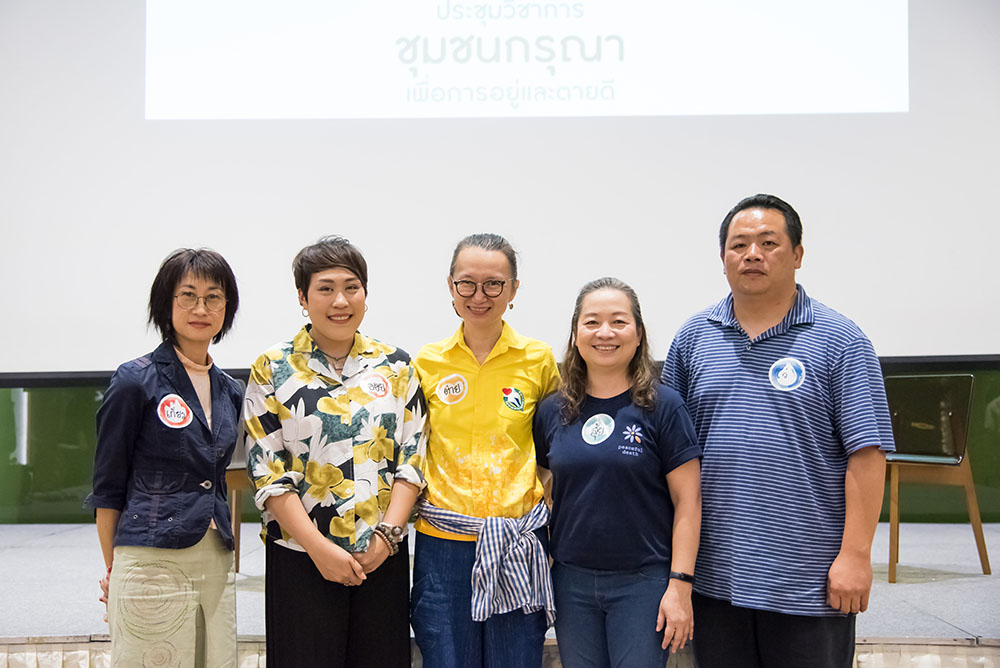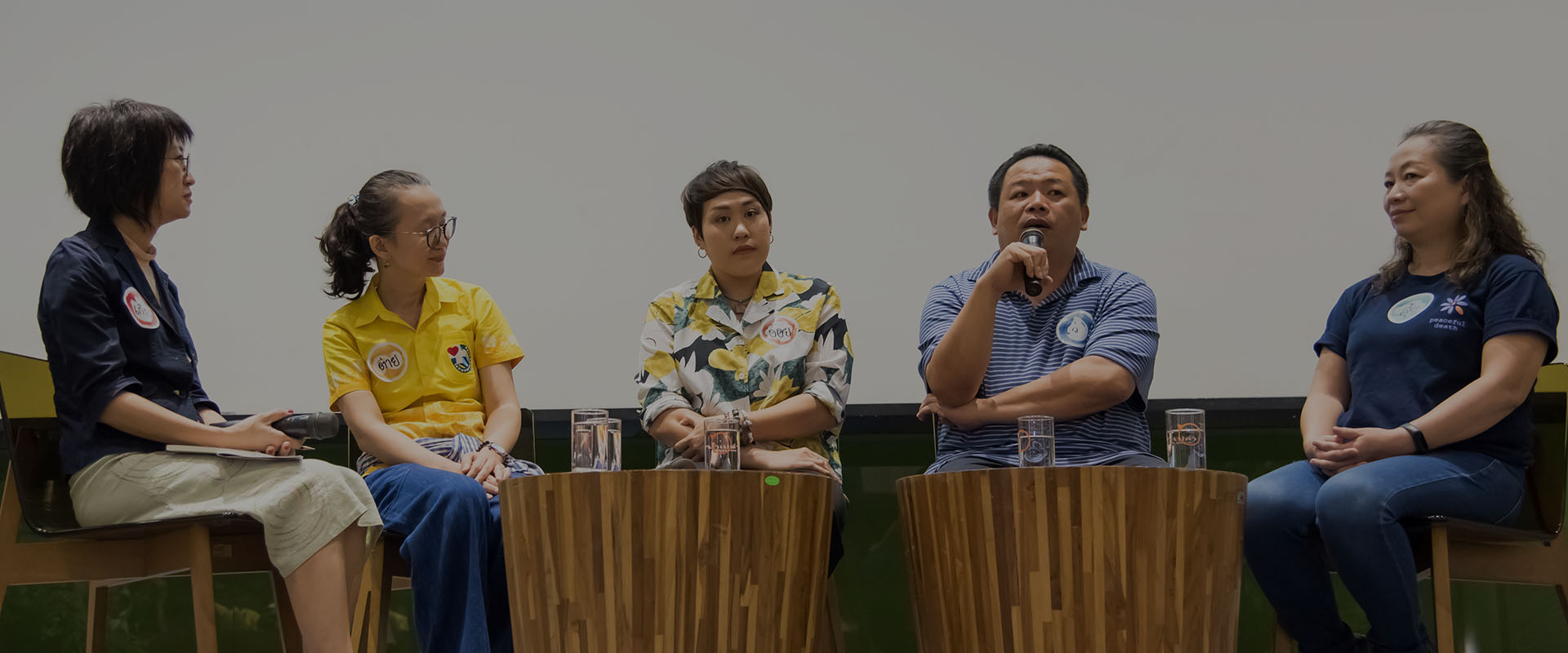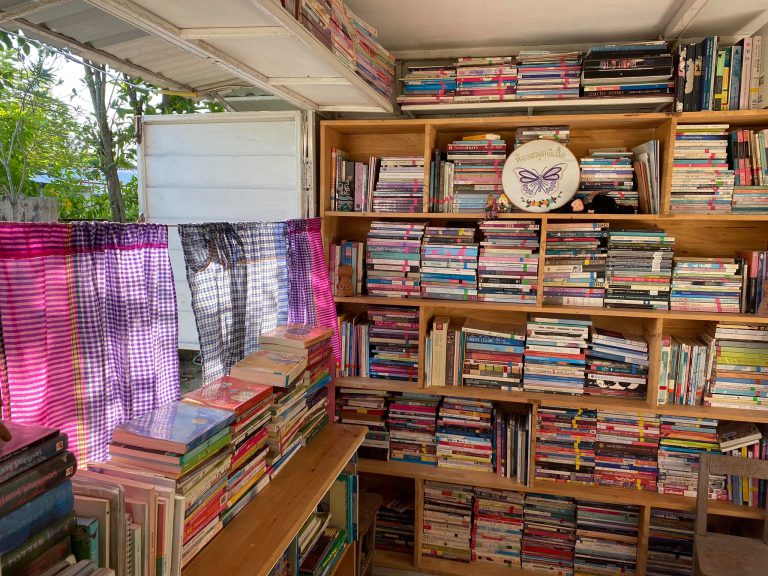Story: Torung
The nature of time is change, thwarting our every attempt to bend it to our whims. For all of us to be equipped with a means of bracing us against the shifting tides of time would be of no small benefit.
And what is this means — that fortifies the spirit that draws all of existence into tender embrace, enabling us to support and care for the happiness of others till we are able to divine the profound meaning of life — if not love?
Thai society has arrived at an interesting watershed. In addition to food insecure, poor and neglected populations, as well as disabled people and the elderly, there is also a growing number of chronically and terminally-ill patients in our society. They deserve care and consideration — as do we.
However, to place all our faith in the public healthcare system would be misguided, as the medical industry produces a limited number of healthcare professionals for a certain level of perceived demand. Furthermore, awareness and knowledge of palliative care aren’t widespread among the general public and those with the capacity to care for patients, such as young working-age relatives, are diminishing in number. The provision of support and caregiving systems that center the quality of life of patients and their families, and that have the scope to facilitate “good deaths” for the breadth of Thai society, thus presents a challenge. Forms of community-building where people support one another through great loss and hardship out of a sense of responsibility born out of compassion coalesce under the framework of “Compassionate Communities”.
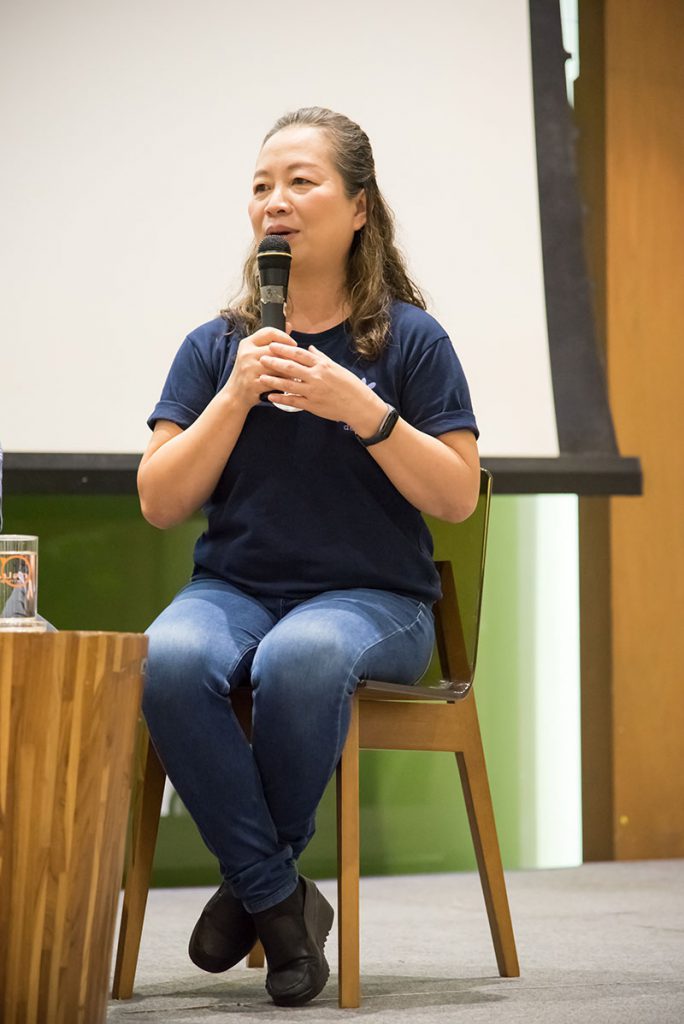
“When we reckon with death we enter a fragile period of our lives, but this can open our hearts,” said the president of Peaceful Death, Wanna Jarusomboon, in a discussion forum titled “The Value of Compassionate Communities in Thai Society”. The forum was part of an academic conference on compassionate communities for being and dying well, hosted at the Thai Health Foundation’s Center for Health and Well-being Studies on November 14th 2019.
Undoubtedly, every single one of us wants to love and be loved. Yet we sometimes lose confidence in our ability to love. “Compassion”, one of the components of true love, is the willingness and ability to assuage the hardships and heavy spirits of others and help them move forward with a lighter tread.
“Asking for help is imperative, for the truth is that everyone has a compassionate heart and a desire to help others. When we send out a call, invisible hands will always reach out to provide support,” says Dr. Wanaporn Wattanakul, a family physician at Khon Kaen Hospital,while reflecting on the inspiration behind her volunteer work. She recounts meeting a disabled individual who had not left her home in 12 years. However, if her family, the community and various personnel had co-ordinated support, she would have been able to leave her home, move around, and see the light of day. Dr. Wattanakul’s compassion and desire to find a way to help this patient engendered the “Save Prakong from the Cave” project (Prakong is the patient’s name, and the project unfolded in tandem with the widely publicised rescue of a youth football team called the “Wild Boars” from Tham Luang Cave in Northern Thailand).
“The clouds are so beautiful… truly beautiful” were the first words uttered by Prakong, upon leaving her room to gaze at a sky she had not seen in twelve years. To most, the beauty of the clouds is probably unremarkable or even overlooked, yet for Dr. Wattanakul and her team, the utterance was its own reward for their compassion.
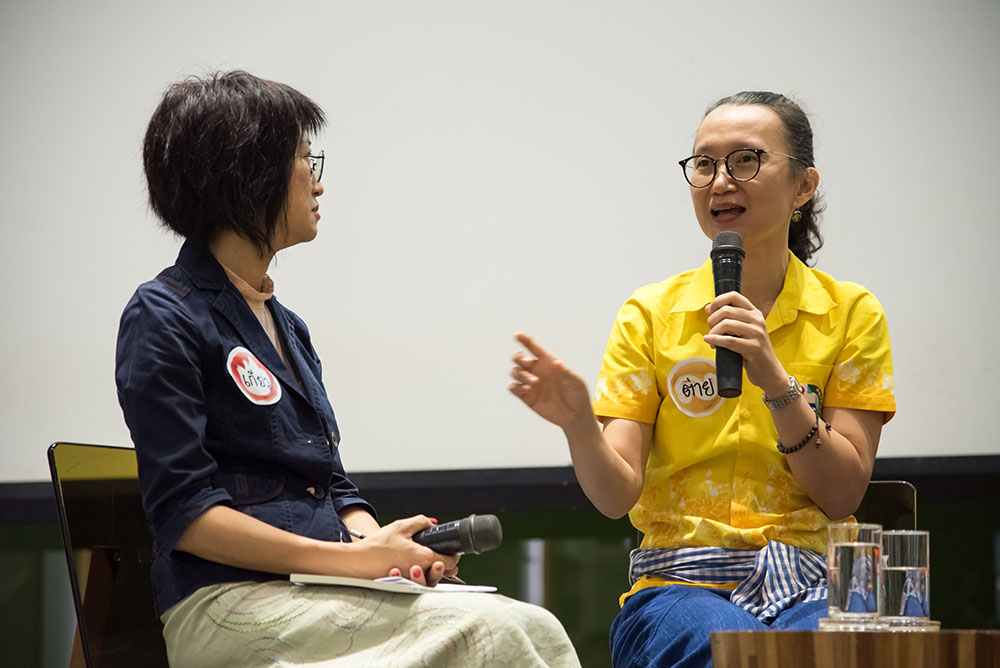
“We have to create our own spaces without waiting for the right policies to be passed, because we can! We are capable of more than we think we are and we have the potential to inspire and build communities of people that have compassion for each other. Even patients who need to be taken care of have the ability to support others,” spoke Wanna Jarusomboon, the president of Peaceful Death, with impassioned conviction.
“They” aren’t so different from “us”, as we all need support and encouragement in our lives.
Confronting loss is a significant matter wherein each member of a community holds two responsibilities. The first is to be responsible for our own death; the second is our collective responsibility to care for the people in our community who experience loss.
“As someone with my own hardships, having been diagnosed with stage 2 cancer in 2011, I also witnessed the suffering of my ‘comrades in cancer’ when I was receiving chemotherapy treatment, and wanted to help them,” begins an interesting contribution from Ireal Traisansri of the Art for Cancer project, one of the speakers invited to the discussion form. “ So, ‘Art for Cancer by Ireal’ was founded to fundraise for poor cancer patients through art. Later, we found out that my cancer had advanced to the final stage, and I felt death draw near. I continued to take care of my physical and emotional health while feeling that I didn’t want ‘Art for Cancer by Ireal’ to die with me. So I created a social enterprise that sells products that put ‘a positive spin’ to cancer to give encouragement to others”.
So far, ‘Art for Cancer by Ireal’ fundraises with art pieces donated by Ireal’s friends, many of whom are artists. They organise various fundraising projects, such as cartoon portraiture commissions and a ‘Survivor Planner’ designed to help cancer patients document their symptoms, side-effects from treatment and other information for their personal use and as a tool when communicating with medical staff and caregivers. The planner is beautifully designed and intuitive to use, complete with words of encouragement for patients going through treatment.
Next, Ireal established a fund for poor cancer patients with three charities, which are the Siriraj Foundation, Ramathibodi Foundation and the National Cancer Institute Foundation. Then, out of a desire to create a sanctuary by someone ‘in the same boat’ for fellow cancer patients, she founded a unique establishment called the ‘Co-caring space’, which also shares accurate and useful information about cancer. The space encourages visitors to share experiences and know-how in dealing with and effectively treating cancer. Educational activities also disseminate information and support for patients navigating ways of living with cancer.
Ireal’s dedication to relieving the hardships of her ‘cancer comrades’ led her to Sirintip Kudtiyakarn, an important colleague who helped organise and expand on various activities and projects until they established a social enterprise to improve their productivity and capacity for fundraising. For Ireal’s work is propelled by her constant refrain: “Will I live till next year? What must I do to make sure that my work is sustainable and won’t die with me?”.
A love void of understanding is never genuine or real. When we observe and listen to others attentively, we come to understand their needs till we intimately feel their suffering. There is a not insignificant number of people whose feelings of ‘lack’ stem from contending with hardship and uncertainty without the care and support they need to heal.
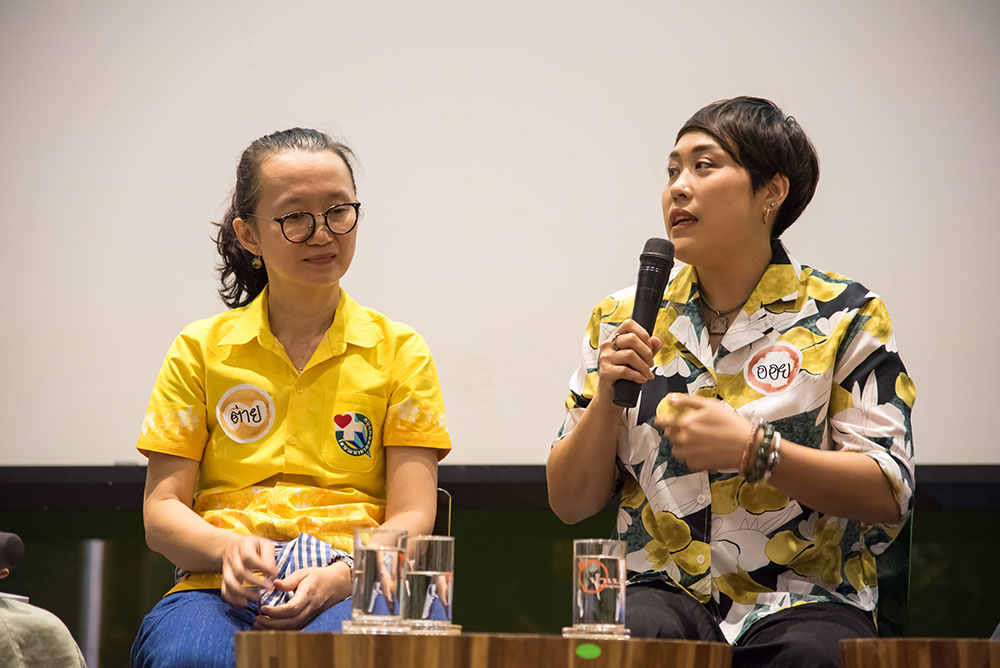
Apirak Jiratpikanpong, a member of the Community Volunteer Association of Muang Nam Dam, Kalasin, was one of the leaders of a volunteer initiative that raised funds for disaster survivors and impoverished people through the ‘Un Gai Mai Nao Jai’ (‘Warm Bodies and Hearts’) Foundation. He also expanded the Juthisukawadee Foundation’s volunteer network, which rallies community compassion and support to arrange funeral services for deceased that are either without family or the means to afford a burial, into a new foundation called ‘Suk Sood Tai Ti Plai Tang Chiwit’ (‘Last Happiness at the End of Life’). Branching out from the provision of funeral services, the new foundation also cares for living patients, with an emphasis on individuals dependent on external help, such bed-ridden patients and their families. Their reflections on the volunteer system have opened up more avenues for volunteers to get involved in the next stage of cultivating this compassionate community.
“The important thing when volunteering in a community is to have transparent channels of communication and support. Then, the community will trust and have confidence in the initiative, and readily cooperate and collaborate. Once this relationship has been established, there will be people willing to participate whenever an activity or event is organised.”
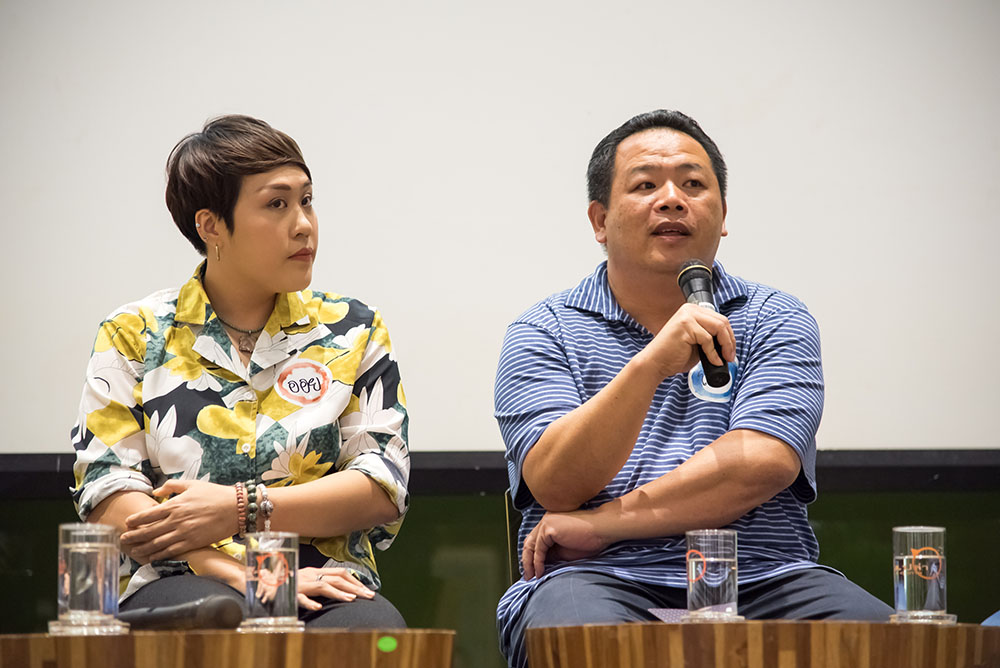
When we up at night, especially on moonless nights, when the sky is draped in a dark canvas twinkling with the light of tens of thousands of stars, and we see the beauty of the heavens studded with luminous pinpricks of starlight, we are filled with joy, warmth, and we never lose our way.
The compassion of Thai society can be likened to seeds that sow love into the hearts of people, and has always brought the cooling waters of respite to those in hardship. If everyone were to cultivate their power of compassion by mobilizing and participating in “compassionate communities” to alleviate suffering across the country, those who are struggling will receive the care and healing they need. Then, these communiites will thrive and bloom into an invaluable and magnificent culture of caregiving. In the words of a certain philosopher who dedicated himself to the study of the stars:
“A single star shows us the beauty of many others
While a constellation shows us the whole a single star is part of”
Sometimes stars don’t necessarily have to appear in the sky as if by a miracle. When our hearts are filled with compassion every thought, word and action is itself miraculous. It is compassion, after all, that makes life, especially our own, more beautiful.
